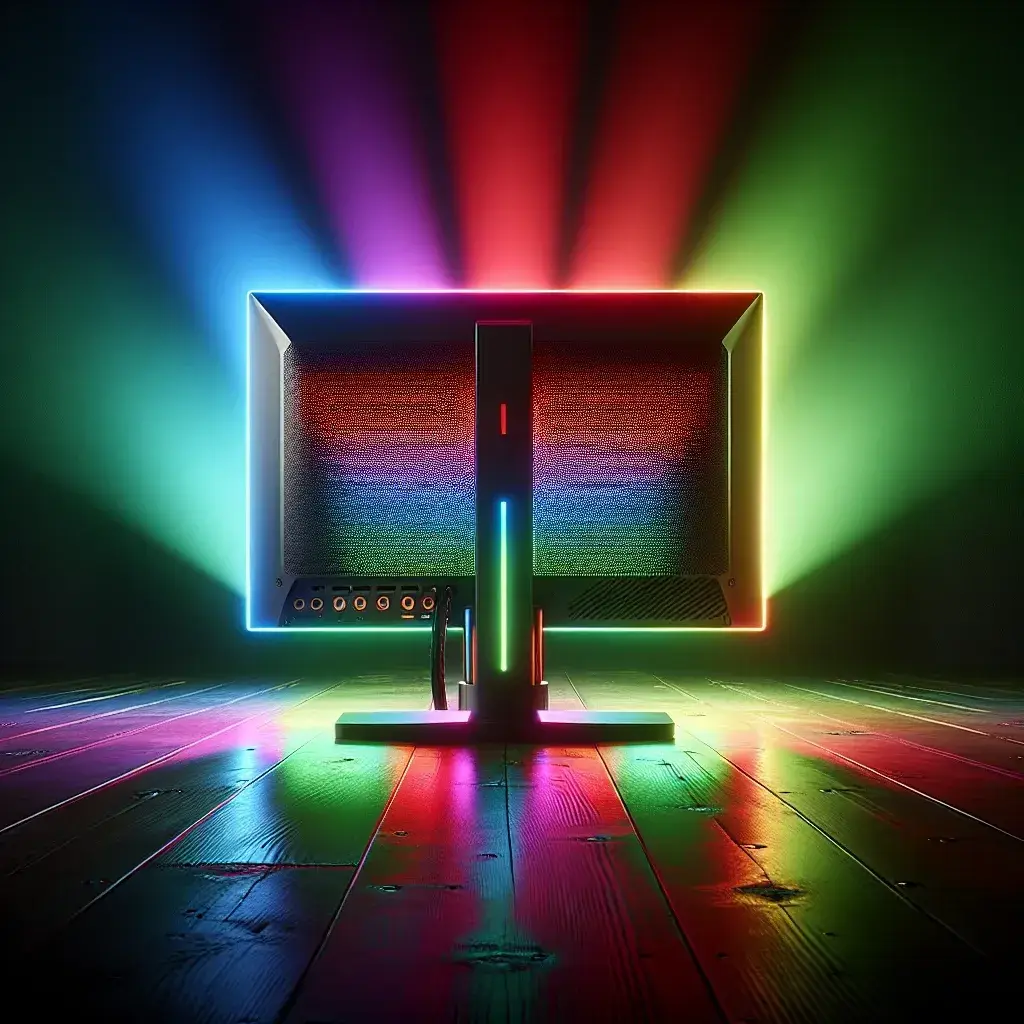RGB lighting has become a significant trend in the gaming community, not just in peripherals like keyboards and mice, but also in gaming monitors. The backlighting on gaming monitors is more than a mere aesthetic feature; it serves several practical purposes too. Let’s delve into the reasons behind this rising trend and why it has become a must-have for many gamers.
The Evolution of RGB Lighting in Gaming Monitors
Initially, RGB lighting was exclusive to high-end gaming peripherals. However, as the demand for immersive gaming experiences grew, manufacturers started integrating RGB lighting into their gaming monitors. This transition aligns with the increasing emphasis on personalized and aesthetically pleasing gaming setups.
Benefits of RGB Lighting in Gaming Monitors
1. Enhanced Aesthetics
One of the primary reasons gaming monitors come with RGB lighting is to enhance the overall visual appeal of the gaming setup. RGB lighting adds a touch of personal flair and vibrancy, making the gaming experience more immersive.
2. Customization Options
RGB lighting offers a high level of customization. Gamers can adjust the colors and effects according to their preferences or sync the lighting with other RGB-enabled devices in their setup. This synchronization creates a cohesive and personalized gaming environment.
3. Ambient Lighting
Aside from aesthetics, RGB lighting can serve as ambient lighting, reducing eye strain during long gaming sessions. The soft glow from the backlighting provides a more comfortable viewing experience, especially in dimly lit rooms.
4. Enhanced Immersion
RGB lighting can increase immersion by reacting to in-game actions. Some gaming monitors are equipped with software that allows the RGB lights to change based on the game being played. This dynamic lighting adds an extra layer of excitement and engagement.
5. Brand Differentiation
For manufacturers, incorporating RGB lighting is a way to differentiate their products in a competitive market. It allows brands to add value to their monitors and attract a specific segment of gamers who prioritize aesthetics and customization.
The Science Behind RGB Lighting
RGB stands for Red, Green, and Blue, the primary colors of light. By combining these three colors in various intensities, RGB lighting can produce a wide spectrum of colors. Most RGB gaming monitors use LEDs (Light Emitting Diodes) to achieve this effect. Modern RGB technology allows for precise control over color accuracy and lighting patterns, enhancing both aesthetics and functionality.
Popular RGB Gaming Monitors
| Brand | Model | Special Features |
|---|---|---|
| ASUS | ROG Swift PG27UQ | 4K Resolution, HDR, G-Sync, Aura RGB |
| Alienware | AW3420DW | WQHD Curved Display, 120Hz, AlienFX Lighting |
| MSI | Optix MPG341CQR | Curved Display, 144Hz, SteelSeries GameSense RGB |
| Samsung | Odyssey G9 | 49-Inch Ultra-wide, 240Hz, Infinity Core Lighting |
These models are equipped with advanced RGB features that not only enhance gaming performance but also elevate the aesthetic appeal of the gaming setup.
How to Optimize Your RGB Experience
- Use Manufacturer’s Software: Most RGB monitors come with dedicated software to control the lighting settings. Using the manufacturer’s software ensures optimal performance and compatibility.
- Sync with Other Devices: For a cohesive look, sync your monitor’s RGB lighting with other peripherals like keyboards, mice, and PC components.
- Experiment with Effects: RGB lighting offers various effects such as breathing, strobing, and color cycling. Experiment with these effects to find the perfect ambience for your gaming sessions.
- Consider Ambient Lighting: Use the RGB lighting as ambient lighting to reduce eye strain during extended gaming sessions. Matching the monitor’s backlight to the room’s lighting can create a more comfortable experience.
Future of RGB Lighting in Gaming Monitors
The future of RGB lighting in gaming monitors looks promising. With advancements in LED technology and increasing demand for personalized gaming setups, we can expect more innovative uses of RGB lighting. Upcoming models may feature more refined controls, broader customization options, and even better integration with gaming ecosystems. RGB lighting will undoubtedly remain a core feature for any gaming enthusiast looking to enhance their experience.
Conclusion
RGB lighting on gaming monitors is more than just a visual gimmick; it has practical benefits that enhance the gaming experience. From aesthetic appeal and customization to ambient lighting and increased immersion, RGB lighting has become an integral part of modern gaming setups. As technology continues to evolve, the role of RGB lighting will only expand, offering gamers even more ways to personalize and enhance their environments.

